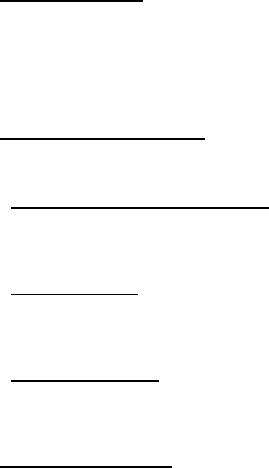 |
|||
|
|
|||
| ||||||||||
|
|  MIL-E-24763A(SH)
w/INT. AMENDMENT 1
(365 days), the panels shall be returned to the laboratory. The panels shall be rinsed with cold tap water at nominal
tap pressure for a period of 5 to 10 minutes without rubbing the surface in a manner that would disturb any chalking.
The test panels shall then be dried for 24 hours at ambient laboratory conditions. The following overcoats shall be
brush applied to of each of two panels and the overcoated panels shall be cured for 48 hours at ambient laboratory
conditions:
a. One coat of enamel, conforming to this specification, at a nominal wet film thickness of 3 to 4 mils
(0.003 to 0.004 inch).
b. One coat of MIL-PRF-24635 Haze Gray no. 27 (FED-STD-595 Color no. 26270) at a nominal wet
film thickness of 3 to 4 mils (0.003 to 0.004 in).
The adhesion between test coats shall be determined in accordance with 4.6.11.1. The adhesion and appearance
shall conform to the requirements of 3.8.10.
4.6.13. Accelerated weathering. The test panels shall consist of four panels prepared in accordance with
4.5.1.1. The priming and coating with enamel shall be in accordance with 4.6.11.1. Measure the initial color of the
test panel in accordance with ASTM E97 on any suitable instrument. The panels shall then be exposed in an
apparatus in conformance with ASTM G53 for a total of 300 hours. The cycle shall be 4 hours ultra-violet exposure
using UVA-313 bulbs at 60C (140F). Remeasure color and gloss of the tested panels. Calculate the change in
gloss. Calculate color difference in accordance with ASTM D2244. Results shall comply with the requirements of
3.7.2.
4.6.14. Hazardous material determination. Soluble and total metal content shall be determined on a dried
powderized enamel in accordance with the requirements of 4.6.14.1 and 4.6.14.2. The hazardous solvent shall be
determined in accordance with the requirements of 4.6.14.3.
4.6.14.1. Toxicity characteristic leaching procedure. Soluble and total metal content shall be determined on
a dried powderized enamel in accordance with the 40 Code of Federal Regulation (CFR), CH 1, Part 261, Appendix
II, Method 1311, toxicity characteristic leaching procedure (TCLP), and the soluble metal content shall not exceed
the values which would cause the material to be classified as hazardous waste.
4.6.14.2. Waste extraction test. Soluble and total metal content shall be determined on a dried powderized
enamel in accordance with California Administrative Code, Title 22, the waste extraction test, the soluble metal
content, and the total metal content shall not exceed the values which would cause the material to be classified as
hazardous waste (see tables I and II).
4.6.14.3. Hazardous air pollutants. Hazardous solvent content shall be determined on the extracted liquid
of the enamel in accordance with the 40 Code of Federal Regulation (CFR), CH 1, Part 261, Appendix II, Method
1311, toxicity characteristic leaching procedure (TCLP). The test results for each solvent shall be in accordance
with the requirement in 3.4.3.
4.6.15. Long term exterior exposure. Test panels shall be of aluminum having nominal dimensions of 150
x 300 x 3 mm (6 x 12 x ⅛ inches). Test requires 4 primed test panels. Test panels shall be degreased in accordance
with methods B, C or D of ASTM D609. The degreased test panels shall be abrasive blasted with new, clean
aluminum oxide to provide a profile pattern of 0.025 to 0.076 mm (0.001 to 0.003 inch) (average). All test panels
shall be primed with 2 spray applied coats of MIL-DTL-24441/1, type III or IV, formula 150 green primer. Each
coat of MIL-DTL-24441/1, type III or IV, formula 150 shall be applied to 0.051- to 0.076-mm (0.002- to 0.003-
inch) dry film thickness. Two coats of the test enamel shall be spray applied on the MIL-DTL-24441/1, type III or
IV, formula 150 coated panels to obtain a final dry film thickness of the test topcoat of 0.101 to 0.152 mm (0.004 to
0.006 inch). The test panels shall be cured for at least 24 hours dry time between applications of the coats of test
topcoats at ambient laboratory conditions. Spraying properties shall be in accordance with 3.8.5 as appropriate. The
completed painted test panels shall be cured for at least 7 days prior to mounting on the test rack. Test specimens
shall be mounted on a test fence having a 45-degree south facing rack at a distance of not greater than 100 feet of an
ocean high tide line. The exposure shall be in accordance with paragraph 6 of ASTM D1014. The fence shall be at
the Naval Research Laboratory, Marine Corrosion Laboratory, Key West, Florida, USA. Prior to initiating the test,
19
|
|
Privacy Statement - Press Release - Copyright Information. - Contact Us |